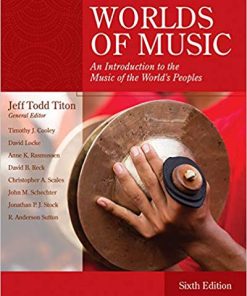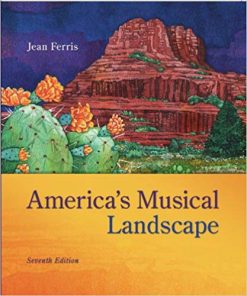The Test Bank for Music Then and Now by Thomas Forrest Kelly offers multiple-choice questions designed to help students understand key concepts in the history of music. This test bank focuses on Chapter 2: Christmas Mass at Notre Dame Cathedral, exploring the Middle Ages and the evolution of religious and secular music during that period.
Sample Questions Include:
- Question 1: Between which two historical eras did the Middle Ages occur?
a) The Greek and the Romantic
b) The Classical and the Modern
c) The Renaissance and the Baroque
d) Antiquity and the Renaissance
e) The Ancient and the Classical
Answer: D
Section: Introduction
Level: Easy - Question 2: All of the following artistic developments date from the Middle Ages EXCEPT:
a) The motets of Josquin
b) The stained glass windows of Chartres
c) The frescoes of Giotto
d) Chaucer’s Canterbury Tales
e) Leoninus’s organum
Answer: A
Section: Introduction
Level: Medium - Question 3: Medieval secular French poet-composers were called:
a) Minnesingers
b) Laudesi
c) Troubadours
d) Clerics
e) Auteurs
Answer: C
Section: Medieval Secular Music
Level: Medium - Question 4: Why is the majority of the medieval music that has survived to the present day religious music?
a) The church suppressed music on nonreligious topics.
b) Much secular music was not written down.
c) Secular styles evolved too quickly to be preserved.
d) The Catholic musical tradition has not changed since the Middle Ages.
e) All of the above.
Answer: B
Section: Introduction
Level: Medium - Question 5: During the earliest part of the Middle Ages, how did musicians transmit their repertoire from one generation to the next?
a) They wrote musical notation on manuscripts.
b) They created memory aids with their fingers.
c) They learned it directly from the pope.
d) They wrote descriptive instructions.
e) They passed it down orally.
Answer: E
Section: Introduction
Level: Medium - Question 6: The collection of monophonic religious melodies sung in Latin during the worship service is referred to as:
a) Organum
b) Gregorian chant
c) Troubadour songs
d) Cantata
e) The Mass
Answer: B
Section: Introduction
Level: Medium - Question 7: What key innovation in musical notation was introduced by Guido of Arezzo, a 9th-century monk?
a) Rhythmic values
b) Time signatures
c) The staff
d) Dynamic markings
e) Defining “high” and “low” notes
Answer: C
Section: Early Musical Notation
Level: Medium - Question 8: Which of the following disciplines was NOT a part of the medieval Quadrivium?
a) Arithmetic
b) Geometry
c) Astronomy
d) Music
e) Logic
Answer: E
Section: Introduction
Level: Medium - Question 9: The largest and most elaborate worship service held daily is called:
a) The Mass
b) Vespers
c) Sext
d) Matins
e) Lauds
Answer: A
Section: Introduction
Level: Easy - Question 10: The earliest composers whose names we know are associated with which body of music?
a) Gregorian chant
b) The Notre Dame repertory
c) Old Roman chant
d) Byzantine chant
e) The First Viennese School
Answer: B
Section: Introduction
Level: Medium
Key Features:
- Focuses on the Middle Ages, Gregorian chant, and early musical notation.
- Includes multiple-choice questions to assess your understanding of historical music periods and figures.
- Instant download, no waiting time.
- Ideal for students studying music history or medieval music.
This test bank is a helpful tool for reinforcing knowledge of the Middle Ages in music, focusing on both secular and religious music from that time. It is perfect for preparing for exams and expanding your understanding of early music history.












Reviews
There are no reviews yet.